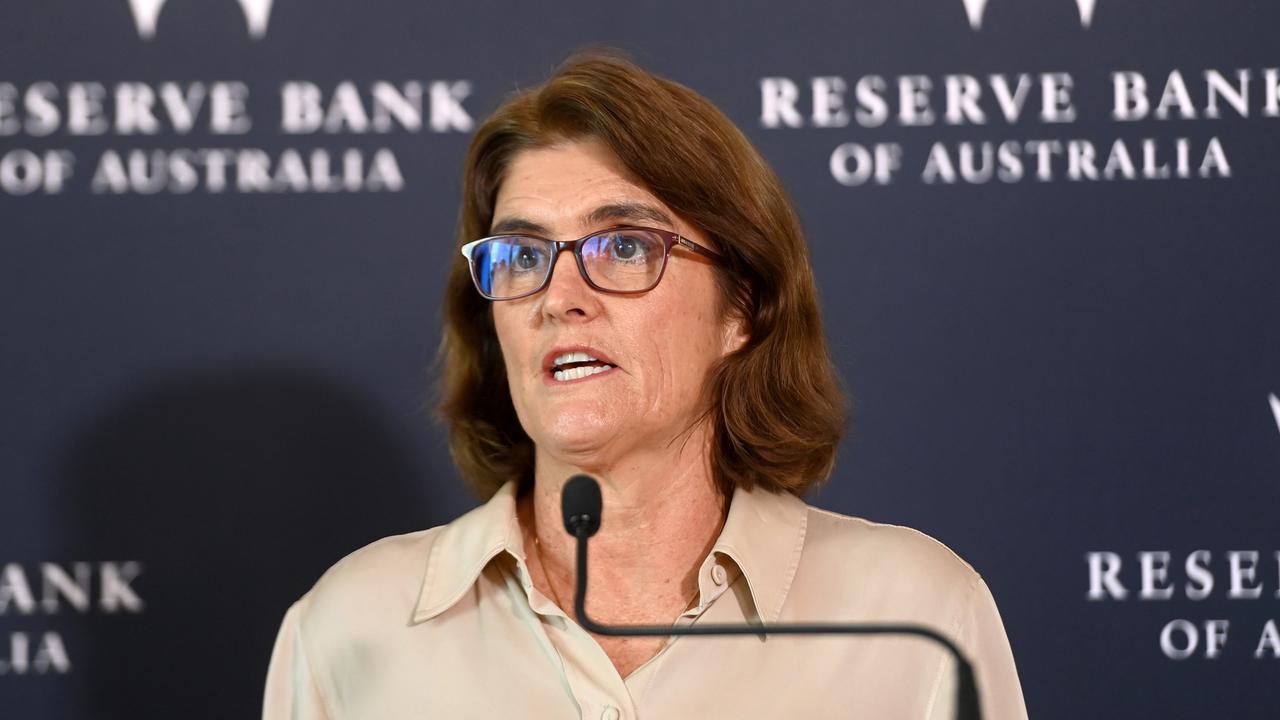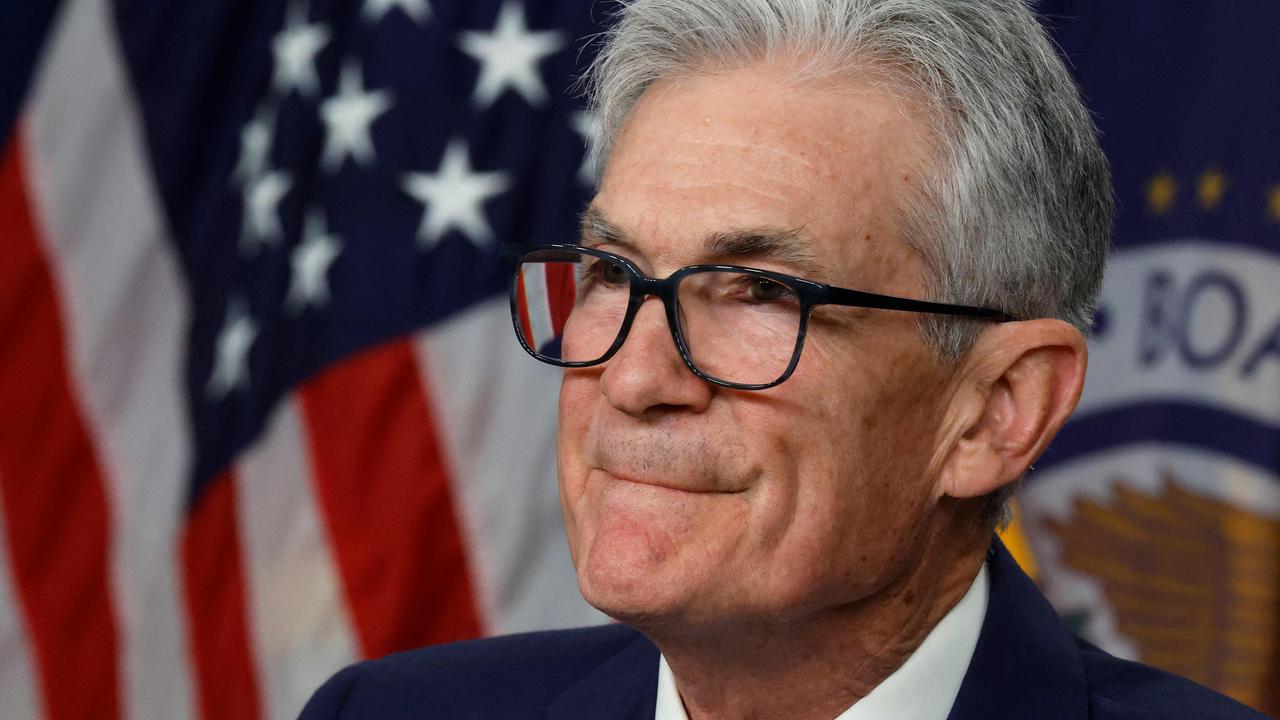The RBA warning Australians will be issued
After a week of chilling warnings for homeowners, millions of eyes will be on the RBA on Tuesday. An expert has revealed what will happen.
As high interest rates bite millions of homeowners and the spectre of inflation still making itself felt at the checkout, Australians will be keen to know what is going through Michele Bullock’s mind.
After a week that saw Commonwealth Bank warn rate hikes were now a “near-term” risk and the US warning rates would stay higher for longer, the Governor of the Reserve Bank of Australia will have a big decision to make on Tuesday.
The promise of any relief coming for borrowers seems to be pushed back with every coming day.
According to CBA’s head of Australian economics, Gareth Aird, most of the expected cuts won’t come until 2025 — making it a tough 12 months for those of us with mortgage repayments.
Thankfully for Aussie homeowners, a hold is the widely expected outcome of Tuesday's RBA meeting.
Shane Oliver — head of investment strategy and chief economist at AMP Capital — said a rate hike is possible, but that he believes the RBA will hold.
Warning for Aussies on Tuesday
However, he believes it could come with a warning.
“I think they’ll leave rates on hold and that they’ll indicate renewed concern about inflation with the tightening bias,” he told news.com.au.
This “tightening bias” would be a key shift in tone from the last RBA meeting, which also resulted in a hold, and it would serve as a caution to those wanting to splash out on a new home or a big purchase.

Dr Oliver said that in the February meeting, the RBA said it wouldn’t rule out a hike or a cut.
“Basically, they’re not prepared to make an indication either way,” he said.
“However, with a tightening bias they would say that a further rate cuts can’t be ruled out.”
This, according to Dr Oliver, has a real world effect on everyday Aussies.
“Tightening bias does has an effect on you, as a homebuyer for example, you think ‘well maybe it’s the right time to get in now because it’s going come down’,” he said.
“But if you’re hearing rates might go up again, then your urgency to go there and buy a new home is less.
“More generally with spending decisions people might think ‘OK I kind of went through this so far with my mortgage maybe I can spend a bit more because it looks like rates are coming down’. And then suddenly they’re saying ‘it might go up’ — it’s going to change people’s spending habits.”
As for the change of a rate hike? Dr Oliver said you can’t rule it out.
“Look, it’s possible,” he said.
“OurMoney Market has a 40 per cent chance of a rate hike by September.
“My conclusion is that I think the RBA is going to stand back — that a hike would be an over-reaction.”

‘Booze and ciggies’: Why Australia is struggling
At the beginning of the year, there that rates would start to come down, however the horizon seems to slip further away for borrowers.
In the US this week, The Federal Reserve held interest rates steady for a sixth straight meeting, keeping the level at a 23-year high to fight stubborn price increases.
In a warning, it put a red flag on recent disappointing inflation readings and suggested an “uncertain” outlook means any rate cuts will likely be kicked further down the track.
Dr Oliver said that while some nations like Canada and some European countries were on track to reduce rates in the near-term — Australia, like the US, were finding it more difficult to tackle inflation.
“There are some specific factors in Australia which complicate things for the RBA and that they have little influence over,” he said.
One of them is the rapidly rising cost of alcohol and tobacco, which has been impacted by increased government taxes.

“On the services side it’s particularly insurance rates. Insurance reflects an increase in claims on the back of natural disasters,” Dr Oliver said.
“Rents reflects the shortage of housing in the face of record immigration levels. You could also factor into that education costs which partly reflect wages growth particularly by state governments.”
This means inflation in Australia is largely due to a handful of items, which the RBA doesn’t have a lot of influence on.
“Therefore they conclude the best approach is to delay rates on all of us with the addition of jawboning in the form of a tightening bias,” Dr Oliver said.
Picture on global economy improving
This week the OECD raised its global economic growth forecast for 2024, driven by strong performances in the United States and emerging countries while Europe lags behind.
The world economy is expected to expand by 3.1 per cent this year, up from a previous projection in February of 2.9 per cent, according to the Organisation for Economic Cooperation and Development.
“Cautious optimism has begun to take hold in the global economy, despite modest growth and the persistent shadow of geopolitical risks,” OECD Clare Lombardelli said in the quarterly report.
But Lombardelli noted that “this recovery is unfolding differently across regions”.
The US economy — the world’s biggest — is now expected to expand 2.6 per cent in 2024, up from the 2.1 per cent previously expected, and faster than last year’s 2.5 per cent.
The OECD also raised its forecast for the second biggest economy, China, to 4.9 per cent from 4.7 per cent previously, thanks notably to an expansionary budgetary policy.
But the OECD expects timid growth of 0.7 per cent in the eurozone, slightly better than the 0.6 per cent previously expected.
It anticipates a slight recovery to 1.5 per cent in 2025, compared to the 1.3 per cent expected in February, thanks to a recovery in domestic demand.
“The global economy has proved resilient, inflation has declined within sight of central bank targets, and risks to the outlook are becoming more balanced,” said OECD Secretary-General Mathias Cormann.

Central banks worldwide raised interest rates in efforts to combat inflation, which rose after countries emerged from Covid lockdowns and soared further following Russia’s assault on Ukraine in 2022.
The US Federal Reserve and the European Central Bank have frozen their rates and markets are hoping to see cuts in the coming months as inflation has eased.
But the Fed is expected to make its cuts later than previously thought due to the resilience of the US economy and an uptick in consumer prices.
‘Prudent’ policy
The OECD warned that “high geopolitical tensions, particularly in the Middle East, could disrupt energy and financial markets, causing inflation to spike and growth to falter”.
“Policy action needs to ensure macroeconomic stability and improve medium-term growth prospects,” Cormann said.
“Monetary policy should remain prudent, with scope to lower policy interest rates as inflation declines.”
He added that “fiscal policy needs to address rising pressures to debt sustainability, and policy reforms should boost innovation, investment and opportunities in the labour market particularly for women, young people and older workers.”
The OECD report said a recovery in household incomes, tight labour markets and the expected interest rate cuts will help to “generate a gradual rebound”.
But it warned that “the mixed macroeconomic landscape is expected to persist, with inflation and interest rates declining at differing paces, and differing needs for fiscal consolidation”.
The OECD cut its 2024 growth forecast for Germany, Europe’s largest economy, to 0.2 per cent from 0.3 per cent previously.
France, the eurozone’s second biggest economy, is expected to post 0.7 per cent growth, up from 0.6 per cent in a previous forecast, lifted by consumer spending.
In Britain, the economy is seen growing 0.4 per cent in 2024 and 1.0 per cent in 2025, slower than what was expected in February, which the OECD blamed on persistent inflation.
— with AFP






